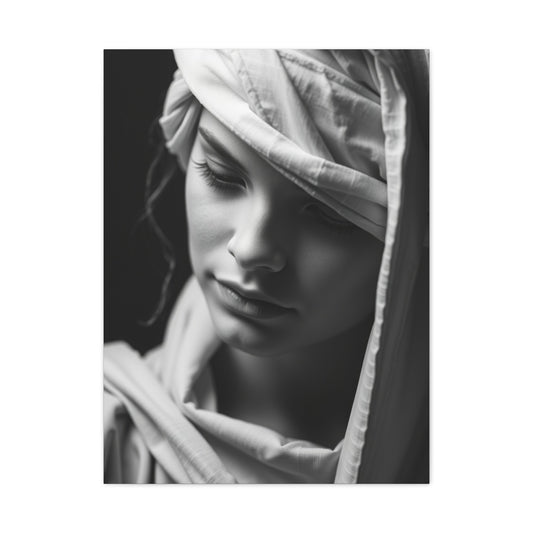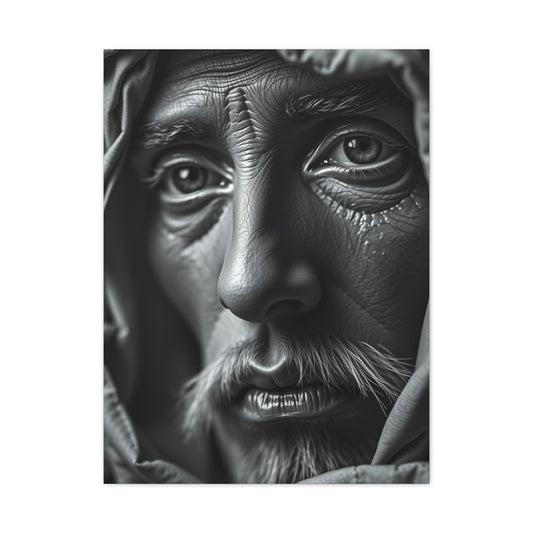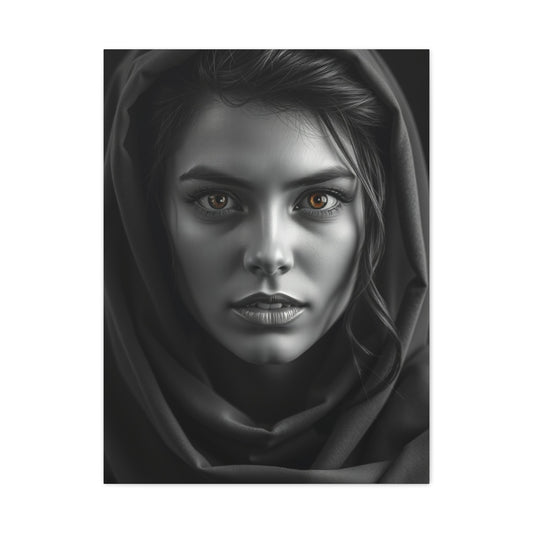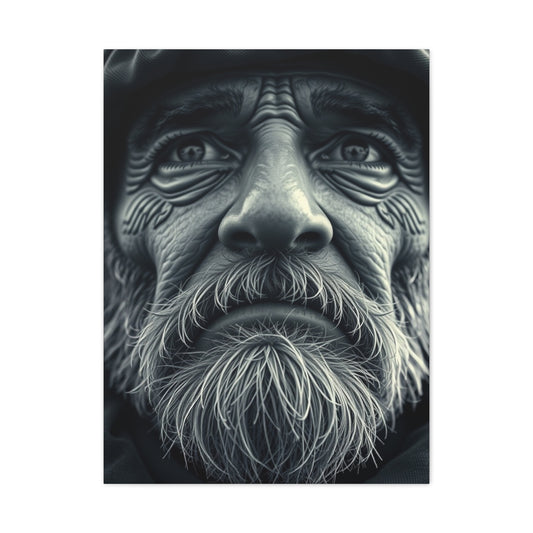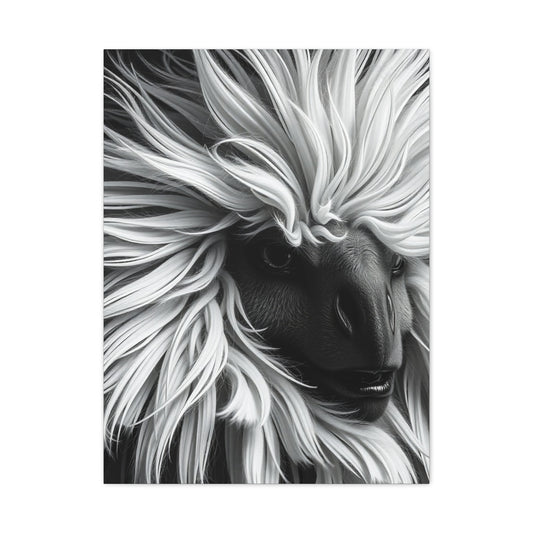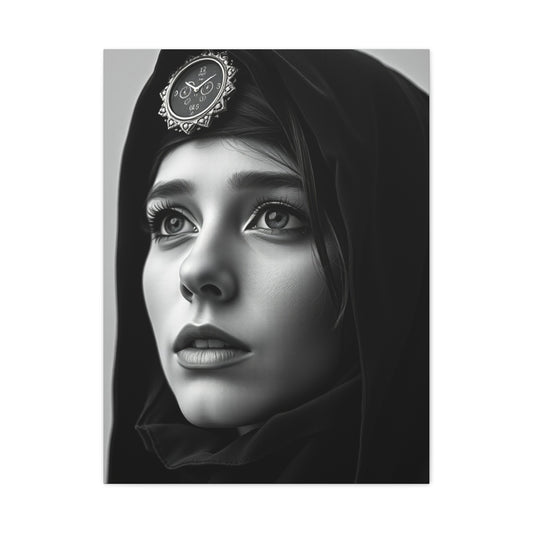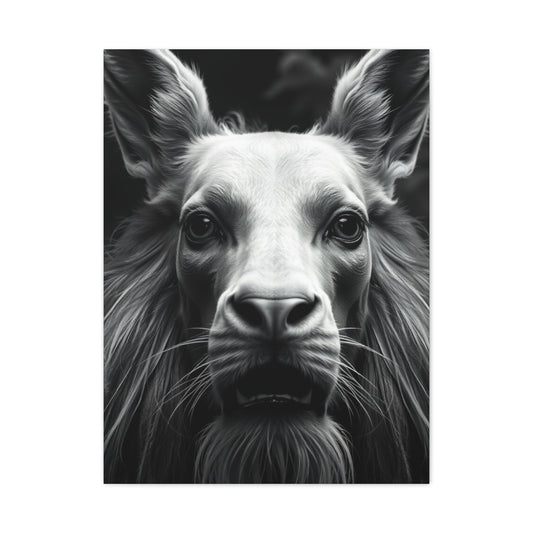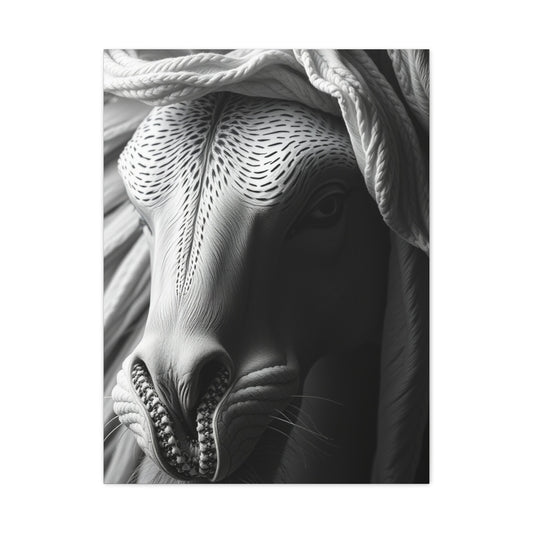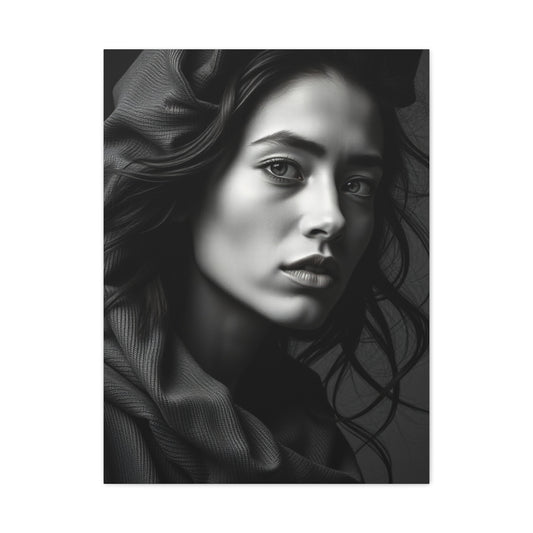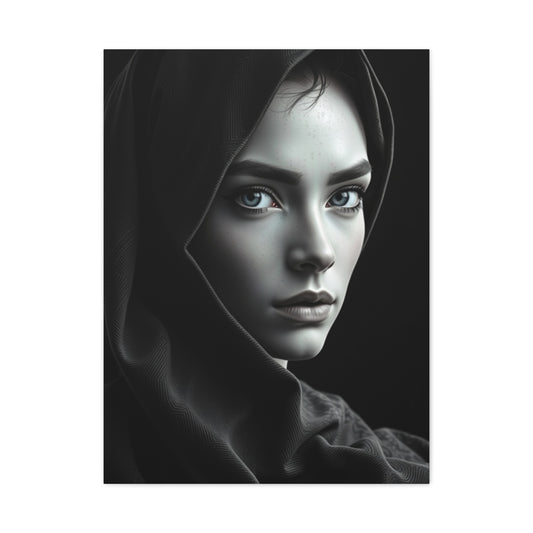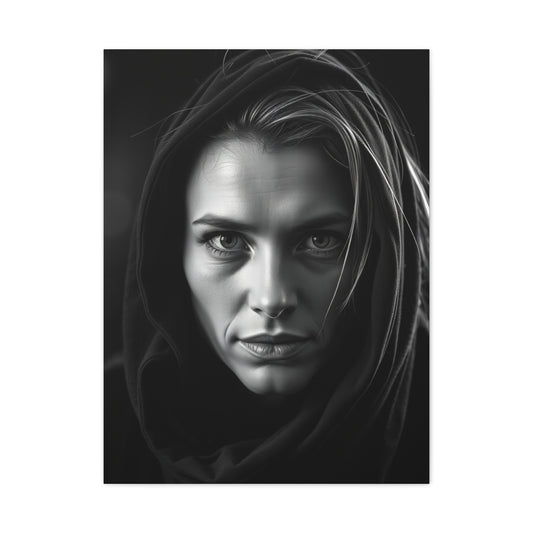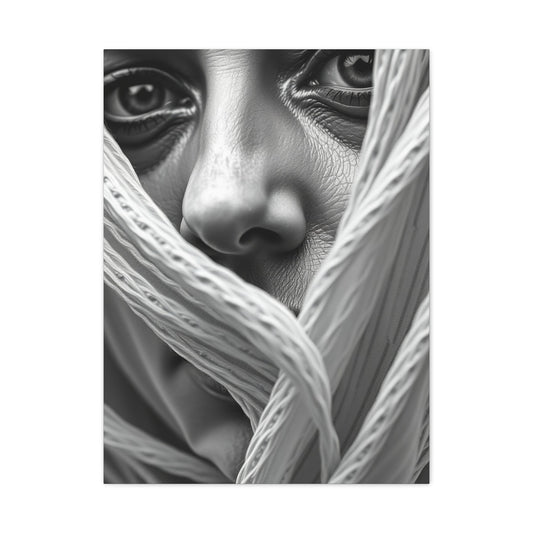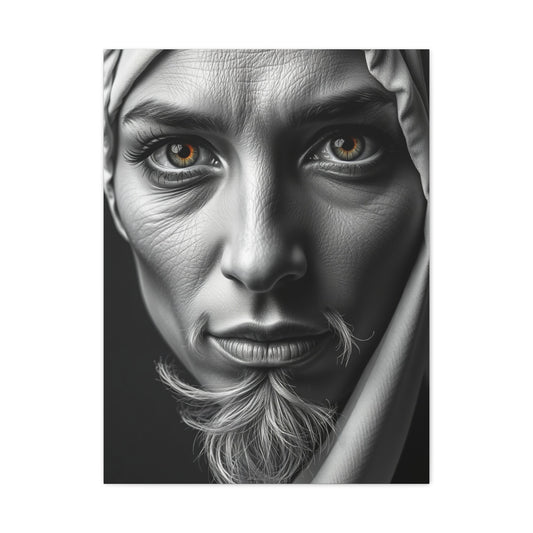The Ultimate Guide to Black Wall Art: Transform Your Living Space with Sophisticated Darkness
The allure of obsidian-hued artistic expressions within interior design has captivated homeowners and decorators for generations. When considering transformative elements for residential spaces, few options possess the inherent power and versatility that charcoal-toned wall decorations provide. This comprehensive exploration delves into the multifaceted world of dark artistic installations, offering insights that will revolutionize your understanding of monochromatic interior enhancement.
The psychological impact of incorporating ebony-colored artistic elements extends far beyond mere aesthetic considerations. These sophisticated pieces create an atmosphere of refined elegance while simultaneously establishing focal points that command attention without overwhelming the surrounding environment. The strategic placement of such artwork can dramatically alter the perceived dimensions of any room, creating illusions of expanded space or intimate coziness depending on the desired outcome.
Contemporary interior design increasingly embraces the dramatic potential of midnight-toned decorative pieces. Professional designers recognize that these elements serve as powerful anchors within color schemes, providing stability and grounding that allows other design elements to flourish. The timeless appeal of these artistic choices ensures longevity in design relevance, making them worthwhile investments for discerning homeowners.
The evolution of manufacturing techniques has expanded the possibilities for creating stunning dark-hued artwork. Advanced printing technologies, innovative materials, and artistic techniques have democratized access to museum-quality pieces that were once exclusively available to affluent collectors. This accessibility has sparked a renaissance in home decoration, with more individuals embracing bold artistic statements.
Understanding the nuanced relationship between lighting and dark artwork becomes crucial for achieving optimal visual impact. The interplay between natural illumination, artificial lighting sources, and the reflective qualities of various surfaces creates dynamic visual experiences that change throughout the day. This temporal aspect adds layers of complexity and interest to interior spaces.
Diverse Categories of Obsidian-Hued Artistic Expressions
The realm of dark-toned decorative pieces encompasses an extraordinarily broad spectrum of artistic mediums and styles. Traditional oil paintings rendered in deep, rich tones have long been favored by collectors who appreciate the depth and complexity achievable through layered pigmentation. These pieces often feature intricate brushwork that creates textural variations visible even from considerable distances.
Photographic prints represent another significant category within this artistic domain. Contemporary photographers have mastered the art of capturing dramatic contrasts through the strategic use of shadows and highlights. These images can range from abstract compositions that challenge conventional perception to highly realistic portraits that seem to emerge from the depths of the frame itself.
Digital art has revolutionized the possibilities for creating striking monochromatic pieces. Artists working in digital mediums can achieve effects and textures previously impossible through traditional methods. The precision afforded by digital tools allows for incredibly detailed work that maintains clarity even when printed at large scales.
Sculptural elements crafted from various metals, woods, and synthetic materials offer three-dimensional alternatives to flat wall-mounted pieces. These installations create dramatic shadow patterns that shift throughout the day, adding kinetic elements to static displays. The tactile qualities of sculptural pieces invite closer examination and provide sensory experiences beyond mere visual appreciation.
Mixed media compositions combine multiple artistic techniques and materials to create complex, layered works. These pieces might incorporate traditional painting methods alongside photographic elements, textural components, or even digital enhancements. The resulting artworks often possess remarkable depth and visual complexity.
Typography-based designs have gained considerable popularity in contemporary interior design. These pieces transform words, phrases, or even single letters into compelling visual statements. The power of language combined with striking visual presentation creates artwork that communicates on multiple levels simultaneously.
Advantages of Incorporating Charcoal-Toned Artwork
The psychological benefits of integrating dark artistic elements into living spaces extend far beyond their obvious aesthetic contributions. Research in environmental psychology suggests that exposure to sophisticated visual stimuli can enhance cognitive function, reduce stress levels, and improve overall mental well-being. The contemplative nature of many dark-themed pieces encourages moments of reflection and mindfulness within busy daily routines.
Dark artwork possesses remarkable versatility in terms of color coordination. Unlike brightly colored pieces that may clash with certain color schemes, charcoal-toned artwork serves as a neutral foundation that complements virtually any palette. This adaptability makes such pieces particularly valuable for individuals who enjoy periodically updating their interior color schemes without replacing major artistic investments.
The sophisticated atmosphere created by well-chosen dark artwork can significantly enhance the perceived value of residential properties. Real estate professionals consistently report that homes featuring thoughtfully curated art collections command higher prices and sell more quickly than comparable properties lacking such visual enhancements. This economic benefit provides additional justification for investing in quality pieces.
From a practical standpoint, darker artwork tends to show less wear and environmental damage over time. Dust, minor scratches, and other inevitable signs of age remain less visible on dark surfaces compared to lighter alternatives. This durability aspect makes such pieces particularly suitable for high-traffic areas or homes with children and pets.
The timeless appeal of monochromatic artwork ensures continued relevance regardless of changing design trends. While specific styles may fall in and out of fashion, the fundamental elegance of well-executed dark pieces remains constant. This longevity protects against the need for frequent replacements due to style obsolescence.
Dark artwork can effectively disguise architectural imperfections or divert attention from less attractive wall features. Strategic placement of compelling pieces can redirect focus toward artistic elements while minimizing awareness of structural irregularities or aging infrastructure.
Contemporary Stylistic Approaches to Dark Artistic Design
The abstract expressionist movement continues to influence contemporary dark artwork creation. Artists working within this tradition emphasize emotional expression over literal representation, using bold strokes, dramatic contrasts, and powerful compositional elements to evoke specific moods or feelings. These pieces often serve as conversation starters and focal points within interior spaces.
Geometric patterns rendered in monochromatic palettes offer clean, modern aesthetic options that complement minimalist interior design approaches. The mathematical precision of geometric compositions appeals to individuals who appreciate order and structure within their living environments. These pieces can create sense of harmony and balance while maintaining visual interest.
Botanical themes translated into dark artistic interpretations provide natural elements without the maintenance requirements of living plants. Silhouetted plant forms, dramatic leaf patterns, and shadowy garden scenes bring organic beauty indoors while maintaining the sophisticated atmosphere that dark artwork provides.
Landscape imagery captured or rendered in monochromatic tones offers opportunities to incorporate natural beauty into interior spaces. These pieces can transport viewers to distant locations, create sense of depth and expansiveness, or simply provide peaceful focal points for contemplation and relaxation.
Portraiture executed in dark tones possesses particularly powerful emotional impact. The human form rendered in shadows and highlights creates intimate connections between viewers and subjects. These pieces can range from classical representations to highly stylized contemporary interpretations.
Industrial-inspired designs reflect contemporary urban environments and appeal to individuals drawn to modern, edgy aesthetic approaches. These pieces might incorporate mechanical elements, architectural details, or abstract representations of city life. The raw, unpolished quality of industrial-themed artwork creates striking contrasts when placed within refined residential settings.
Strategic Approaches to Incorporating Dark Artwork
The successful integration of dark artistic elements requires careful consideration of existing interior design elements. Room size, natural lighting conditions, existing color schemes, and architectural features all influence the optimal selection and placement of artwork. Understanding these relationships enables homeowners to maximize the visual impact of their artistic investments.
Scale relationships between artwork and surrounding furniture pieces significantly affect overall visual harmony. Oversized pieces can overwhelm small spaces, while undersized artwork may appear insignificant within large rooms. Professional designers recommend considering the proportional relationships between all visual elements when making selection decisions.
Lighting considerations become particularly crucial when working with dark artwork. Inadequate illumination can render beautiful pieces nearly invisible, while excessive lighting may create unwanted glare or reflection issues. The strategic placement of accent lighting, track systems, or picture lights can dramatically enhance the visibility and impact of dark artistic elements.
Color coordination strategies extend beyond simple matching or contrasting approaches. Sophisticated color theory principles can guide the creation of harmonious relationships between artwork and surrounding design elements. Understanding concepts such as color temperature, saturation levels, and value relationships enables more nuanced decorative decisions.
Grouping strategies for multiple pieces require careful attention to visual balance, thematic consistency, and spatial relationships. Gallery walls featuring collections of related pieces can create dramatic focal points while providing flexibility for future additions or rearrangements. The spacing between individual pieces affects the overall cohesiveness of grouped displays.
Room function considerations influence optimal artwork selection. Pieces chosen for bedrooms might prioritize calming, peaceful qualities, while those selected for offices or studies might emphasize energy and motivation. Understanding the psychological effects of different artistic styles enables more purposeful selection processes.
Comparative Analysis of Benefits and Limitations
The sophisticated elegance achieved through strategic use of dark artwork represents one of the most significant advantages of this decorative approach. These pieces instantly elevate the perceived refinement level of any interior space, creating atmospheres typically associated with high-end galleries or luxury establishments. This transformation occurs without requiring extensive renovations or expensive furniture replacements.
The neutral nature of dark artwork provides exceptional flexibility for future decorative changes. Homeowners can modify accent colors, replace textiles, or update furniture pieces without concern for coordination with existing artwork. This adaptability represents significant long-term value, as it eliminates the need for artwork replacement when implementing design updates.
However, the dramatic nature of dark artwork can potentially overwhelm smaller spaces or rooms with limited natural lighting. The visual weight of these pieces may create oppressive feelings in cramped quarters or poorly illuminated areas. Careful assessment of spatial and lighting conditions becomes essential for avoiding negative psychological effects.
The bold presence of dark artwork may conflict with certain decorative styles that emphasize lightness, airiness, or cottage-like charm. Romantic, shabby chic, or beach-themed decorating approaches might not harmonize well with the serious, sophisticated character of dark artistic elements. Style compatibility assessment prevents decorative discord.
Maintenance considerations for dark artwork vary depending on materials and protective treatments. While darker surfaces may hide minor imperfections better than lighter alternatives, they can show dust accumulation more readily. Regular cleaning requirements and appropriate care techniques must be understood to maintain optimal appearance over time.
Cost considerations encompass both initial purchase prices and long-term value retention. High-quality dark artwork often commands premium prices due to sophisticated production techniques and materials. However, the timeless appeal and durability of these pieces frequently justify initial investments through extended usability and maintained aesthetic relevance.
Sourcing Premium Dark Artistic Elements
The contemporary marketplace offers numerous avenues for acquiring high-quality dark artwork, each with distinct advantages and considerations. Traditional art galleries provide opportunities to view pieces in person, assess quality directly, and receive expert guidance from knowledgeable staff members. These establishments often feature exclusive pieces unavailable through other channels.
Online marketplaces have revolutionized artwork accessibility, offering vast selections from artists worldwide. Digital platforms enable comparison shopping, price research, and access to customer reviews that inform purchasing decisions. However, the inability to physically examine pieces before purchase represents a significant limitation of online shopping.
Artist studios and workshops provide unique opportunities to commission custom pieces tailored to specific requirements. Direct collaboration with artists enables personalized artwork creation that perfectly complements existing interior design elements. These relationships often result in distinctive pieces unavailable through commercial channels.
Art fairs and exhibitions offer concentrated access to multiple artists and styles within single venues. These events provide opportunities to discover emerging talents, compare different approaches, and potentially negotiate favorable pricing terms. The competitive environment of art fairs sometimes yields exceptional value opportunities.
Interior design firms often maintain relationships with preferred artists and suppliers, enabling access to trade-only sources and professional-grade pieces. Working with design professionals provides expert guidance on selection, coordination, and installation while potentially accessing wholesale pricing structures.
Estate sales and auction houses occasionally offer exceptional pieces at favorable prices. These venues require expertise in authentication and condition assessment but can yield remarkable discoveries for knowledgeable buyers. The unpredictable nature of auction environments adds excitement to the acquisition process.
Professional Installation Techniques and Considerations
The proper installation of dark artwork requires attention to structural support, positioning accuracy, and protective measures. Heavy pieces demand appropriate wall anchoring systems capable of supporting substantial weights safely over extended periods. Professional installers possess specialized tools and expertise for handling valuable artwork without damage.
Positioning calculations must consider viewing angles, traffic patterns, and lighting conditions to achieve optimal visual impact. Mathematical formulas exist for determining ideal height placements based on average viewer eye levels and room proportions. These calculations ensure maximum appreciation potential for installed pieces.
Environmental protection measures become crucial for preserving artwork condition over time. Factors such as humidity control, temperature stability, and ultraviolet light exposure can significantly affect artwork longevity. Understanding these environmental influences enables implementation of appropriate protective strategies.
Security considerations for valuable pieces may require specialized mounting systems, alarm integration, or insurance documentation. High-value artwork attracts unwanted attention and may require additional protective measures beyond standard installation techniques. Professional security assessments can identify potential vulnerabilities.
Seasonal adjustments may be necessary in climates with significant environmental variations. Expansion and contraction of materials due to temperature and humidity changes can affect mounting stability over time. Regular inspection schedules help identify potential issues before they become serious problems.
Documentation of installation details provides valuable reference information for future maintenance, relocation, or insurance purposes. Detailed records of mounting techniques, wall locations, and hardware specifications facilitate future service requirements and protect investment values.
Color Coordination Strategies and Harmonious Combinations
The sophisticated interplay between dark artwork and surrounding color elements creates opportunities for remarkable interior design achievements. Understanding color theory principles enables homeowners to create harmonious relationships that enhance both artistic and decorative elements simultaneously. The neutral nature of dark artwork provides exceptional flexibility for color coordination experiments.
Monochromatic color schemes incorporating various shades of gray, charcoal, and black create refined, elegant atmospheres perfect for contemporary or minimalist decorating approaches. These schemes rely on textural variations and subtle tonal differences to maintain visual interest without introducing competing color elements. The resulting environments possess timeless sophistication that transcends temporary design trends.
Complementary color relationships pair dark artwork with carefully selected accent colors that create dynamic visual tension without overwhelming the overall design scheme. Warm accent colors such as deep golds, rich burgundies, or burnt oranges can create inviting, cozy atmospheres when balanced against dark artistic elements. These combinations work particularly well in traditional or transitional decorating styles.
Analogous color harmonies incorporate colors adjacent to black on the color wheel, creating smooth transitions and peaceful visual experiences. Deep blues, purples, or forest greens can complement dark artwork while adding subtle color interest to interior spaces. These relationships create sophisticated, calming environments ideal for bedrooms or study areas.
Triadic color schemes introduce three equally spaced colors to create vibrant yet balanced compositions. When anchored by dark artwork, these schemes can incorporate bold accent colors without creating chaotic visual experiences. The dark elements provide stability and grounding that allows brighter colors to shine without overwhelming the overall design.
Metallic accent integration offers opportunities to add luxury and sparkle to dark artwork displays. Gold, silver, copper, or bronze elements can be introduced through frames, lighting fixtures, or decorative accessories to create rich, layered visual experiences. The reflective qualities of metallic elements add depth and dimension to monochromatic schemes.
Natural material combinations bring organic warmth to dark artwork displays. Wood tones, natural stone textures, or plant materials can soften the potentially severe character of dark pieces while maintaining sophisticated overall appearances. These combinations create balanced environments that feel both refined and welcoming.
Material Innovations and Technological Advancements
Contemporary manufacturing technologies have revolutionized the possibilities for creating stunning dark artwork across multiple mediums. Advanced printing techniques enable reproduction of fine art pieces with unprecedented accuracy and detail retention. High-resolution digital printing can capture subtle tonal variations and textural elements that were previously lost in reproduction processes.
Canvas materials have evolved beyond traditional cotton and linen options to include synthetic alternatives that offer enhanced durability and color retention properties. Modern canvas treatments resist fading, moisture damage, and environmental deterioration while maintaining the classic appearance and texture that make canvas artwork so appealing.
Metal printing technologies create striking artwork pieces with exceptional longevity and unique visual properties. Aluminum and steel substrates provide smooth, durable surfaces that enhance color depth and create subtle metallic undertones. These materials resist environmental damage and maintain their appearance for decades with minimal maintenance requirements.
Acrylic mounting systems protect artwork while creating modern, gallery-quality presentations. These clear substrates add depth and dimension to printed images while providing protection from environmental factors. The contemporary appearance of acrylic-mounted pieces complements modern interior design approaches.
Wood substrate printing combines the warmth of natural materials with high-quality image reproduction capabilities. Various wood species offer different grain patterns and color characteristics that can enhance specific artwork styles. The organic nature of wood substrates creates unique, one-of-a-kind pieces that cannot be exactly duplicated.
Glass printing technologies enable creation of striking artistic pieces with exceptional clarity and color vibrancy. Tempered glass substrates provide durability while creating sophisticated, gallery-quality presentations. The reflective properties of glass can add dynamic elements to artwork displays as lighting conditions change throughout the day.
Digital enhancement technologies allow artists to manipulate and optimize images for specific printing applications. Color correction, contrast adjustment, and resolution enhancement ensure optimal results regardless of the original image source. These technologies democratize access to professional-quality artwork production.
Psychological Impact and Emotional Responses
The psychological effects of dark artwork on human behavior and emotional states represent a fascinating aspect of interior design psychology. Research in environmental psychology demonstrates that visual stimuli significantly influence mood, stress levels, and cognitive performance. Dark artwork can create contemplative atmospheres that encourage introspection and mindfulness practices.
The sophisticated nature of well-chosen dark pieces can enhance feelings of competence and success within residential environments. Surrounding oneself with refined artistic elements creates positive psychological associations that can improve self-esteem and confidence levels. This phenomenon partially explains why successful individuals often invest heavily in art collections.
Color psychology principles suggest that darker tones can create feelings of stability, security, and grounding. In chaotic modern lifestyles, these psychological anchors provide valuable emotional benefits that extend beyond mere aesthetic appreciation. Dark artwork can serve as visual meditation focal points that promote relaxation and stress reduction.
The contemplative nature of many dark artistic pieces encourages slower, more thoughtful observation patterns compared to brightly colored alternatives. This forced deceleration can provide valuable respite from fast-paced modern lifestyles while promoting mindfulness and present-moment awareness.
Cultural associations with darkness and sophistication influence psychological responses to dark artwork. These pieces can evoke feelings of luxury, exclusivity, and refinement that enhance the perceived status of residential environments. The psychological benefits of living within aesthetically pleasing surroundings contribute to overall life satisfaction levels.
Individual personality differences affect responses to dark artwork, with some individuals finding these pieces energizing and inspiring while others may perceive them as somber or oppressive. Understanding personal psychological responses enables more informed selection decisions that align with individual preferences and lifestyle requirements.
The therapeutic potential of dark artwork should not be overlooked, as many individuals find comfort and emotional release through contemplation of sophisticated artistic pieces. These works can provide emotional outlets, inspire creativity, or simply offer peaceful focal points for meditation and reflection.
Historical Context and Cultural Significance
The tradition of incorporating dark artistic elements into interior design spans centuries and crosses numerous cultural boundaries. Ancient civilizations recognized the power and sophistication inherent in monochromatic artistic expressions, using these elements to convey status, spiritual significance, and aesthetic refinement.
European aristocracy of the Renaissance period frequently commissioned dark-toned portraits and religious scenes that demonstrated both wealth and cultural sophistication. These pieces served as status symbols while providing educational and spiritual inspiration for household members and visitors. The tradition of collecting serious, contemplative artwork established patterns that continue to influence contemporary decorating practices.
Asian artistic traditions have long embraced the beauty and philosophical significance of monochromatic expression. Traditional ink paintings, calligraphy, and ceramic arts demonstrate the profound beauty achievable through limited color palettes. These cultural influences continue to inspire contemporary artists and collectors worldwide.
The Industrial Revolution introduced new materials and manufacturing techniques that expanded possibilities for creating affordable dark artwork. Mass production capabilities democratized access to sophisticated artistic pieces, enabling middle-class households to incorporate gallery-quality elements into their interior design schemes.
Modernist art movements of the early twentieth century embraced abstract and minimalist approaches that frequently featured dark tonal palettes. These artistic philosophies emphasized emotional expression over literal representation, creating powerful pieces that continue to influence contemporary design sensibilities.
Contemporary global culture increasingly appreciates the universal appeal of dark artistic elements that transcend specific cultural boundaries. The sophisticated nature of these pieces enables cross-cultural appreciation and creates common ground for international design collaboration and inspiration.
Maintenance and Preservation Strategies
Proper care and maintenance of dark artwork ensure continued beauty and value retention over extended periods. Different materials require specific cleaning techniques and protective measures that preserve appearance while preventing damage from environmental factors or improper handling.
Dust accumulation represents one of the most common maintenance challenges for dark artwork. Regular cleaning schedules using appropriate techniques prevent buildup that can dull surfaces and obscure fine details. Microfiber cloths, soft brushes, and specialized cleaning products designed for specific materials ensure effective cleaning without causing damage.
Environmental control measures protect artwork from factors that can cause fading, warping, or other deterioration. Humidity control, temperature stability, and ultraviolet light protection significantly extend artwork lifespan while maintaining optimal appearance. Professional conservation advice may be necessary for valuable pieces requiring specialized care.
Protective framing and glazing systems provide barriers against environmental damage while enhancing presentation quality. Museum-quality materials and techniques ensure maximum protection without compromising visual impact. Professional framing services possess expertise in selecting appropriate materials and techniques for specific artwork types.
Storage considerations become important for pieces that may be rotated or temporarily removed from display. Proper storage conditions prevent damage during periods when artwork is not actively displayed. Climate-controlled storage facilities offer optimal conditions for valuable collections requiring professional care.
Insurance documentation and appraisal services protect financial investments while providing peace of mind for valuable collections. Regular appraisals ensure adequate coverage levels while documenting condition and authenticity for future reference. Professional documentation services provide detailed records that support insurance claims and estate planning requirements.
Investment Potential and Value Considerations
The financial aspects of dark artwork acquisition encompass both immediate costs and long-term value potential. Quality pieces from established artists or reputable publishers often appreciate in value over time, making them viable investment opportunities beyond their decorative benefits. Understanding market trends and artist reputations guides informed purchasing decisions.
Limited edition pieces frequently command premium prices due to their scarcity and collectible nature. These pieces may offer superior investment potential compared to unlimited reproductions, particularly when accompanied by certificates of authenticity and proper documentation. The exclusivity factor enhances both current and future value prospects.
Original artworks typically represent the highest investment potential category, particularly pieces from emerging or established artists with growing reputations. Market research and professional guidance help identify artists with strong potential for future recognition and corresponding value appreciation.
Condition preservation significantly affects long-term value retention for all artwork categories. Proper care, maintenance, and storage practices protect investments while ensuring continued aesthetic appeal. Professional conservation services may be justified for valuable pieces requiring specialized attention.
Market timing considerations affect both purchase and sale decisions for artwork investments. Economic conditions, artistic trends, and collector preferences influence market values in complex ways that require expertise to navigate successfully. Professional art consultants provide valuable guidance for serious investors.
Documentation and provenance records significantly impact artwork values, particularly for original pieces or limited editions. Maintaining complete records of purchase, condition, and authenticity supports future valuation efforts while protecting investment interests. Professional documentation services ensure proper record keeping.
Technological Integration and Smart Home Applications
Modern technology offers innovative approaches to enhancing dark artwork displays through intelligent lighting systems, environmental controls, and interactive features. Smart home integration enables automated adjustments that optimize viewing conditions while protecting artwork from environmental damage.
LED lighting systems provide energy-efficient illumination options with customizable color temperatures and intensity levels. These systems can be programmed to adjust automatically based on time of day, room occupancy, or specific viewing requirements. The long lifespan and low heat output of LED systems make them ideal for artwork illumination applications.
Environmental monitoring systems track temperature, humidity, and light exposure levels to ensure optimal conditions for artwork preservation. These systems can trigger automatic adjustments to climate control systems or provide alerts when conditions exceed safe parameters. Professional-grade monitoring equipment offers precision and reliability for valuable collections.
Digital art integration creates dynamic displays that can change throughout the day or respond to viewer preferences. High-resolution digital frames enable rotation of multiple pieces within single display areas while maintaining museum-quality presentation standards. These systems offer flexibility and variety that static displays cannot match.
Augmented reality applications enhance artwork appreciation by providing additional information, artist backgrounds, or related content when viewed through mobile devices. These interactive features create educational opportunities and deeper engagement with artistic pieces. Technology integration adds value without compromising traditional aesthetic appeal.
Security integration protects valuable artwork through motion detection, video monitoring, and automated alert systems. These technologies provide peace of mind while maintaining aesthetic integrity of display environments. Professional security consultations ensure appropriate protection levels without compromising design objectives.
Emerging Trends and Future Directions
Contemporary dark artwork trends reflect broader cultural shifts toward minimalism, sustainability, and technological integration. Emerging artists increasingly experiment with recycled materials, digital techniques, and interactive elements that challenge traditional boundaries between art and technology.
Sustainable production methods gain importance as environmental consciousness influences consumer preferences. Artists and manufacturers increasingly adopt eco-friendly materials and processes that minimize environmental impact while maintaining quality standards. This trend aligns with broader sustainability movements in home decoration and construction industries.
Customization capabilities enable personalized artwork creation that reflects individual preferences and specific spatial requirements. Advanced printing technologies and artist collaboration services create unique pieces tailored to particular environments and design objectives. This trend toward personalization reflects broader cultural emphasis on individual expression.
Mixed media experimentation combines traditional artistic techniques with contemporary materials and technologies. These hybrid approaches create innovative pieces that offer unique visual experiences while pushing creative boundaries. The resulting artworks often possess distinctive characteristics that cannot be achieved through single-medium approaches.
Global cultural fusion influences contemporary dark artwork as artists draw inspiration from diverse traditions and techniques. This cross-cultural pollination creates rich, complex pieces that reflect our increasingly connected world. International collaboration and influence expand creative possibilities while honoring traditional artistic heritage.
Digital marketplace expansion democratizes artwork acquisition while connecting artists directly with collectors worldwide. Online platforms eliminate geographical barriers while providing access to emerging talents and unique pieces that may not be available through traditional channels. This accessibility trend benefits both artists and collectors while fostering creative diversity.
Specialized Applications and Unique Environments
Healthcare environments increasingly recognize the therapeutic benefits of thoughtfully selected dark artwork in creating calming, sophisticated atmospheres that reduce patient stress and anxiety levels. Medical facilities, dental offices, and mental health practices incorporate these elements to enhance healing environments while maintaining professional appearances.
Corporate environments utilize dark artwork to create impressive, professional atmospheres that reflect organizational sophistication and success. Executive offices, conference rooms, and reception areas benefit from carefully chosen pieces that communicate competence while inspiring confidence among clients and employees.
Hospitality applications in hotels, restaurants, and entertainment venues rely on dark artwork to create memorable atmospheres that enhance customer experiences. These environments require durable pieces that maintain their appearance despite high traffic and varying environmental conditions. Professional-grade materials and installation techniques ensure longevity in demanding applications.
Educational environments increasingly incorporate sophisticated artwork to inspire learning and create stimulating intellectual atmospheres. Libraries, study areas, and administrative offices benefit from contemplative pieces that encourage focus and reflection while demonstrating institutional commitment to cultural enrichment.
Retail environments use dark artwork strategically to create luxury associations and enhance product presentations. High-end boutiques, jewelry stores, and professional service offices employ these elements to communicate quality and sophistication that justifies premium pricing structures.
Residential applications continue to expand as homeowners recognize the transformative potential of well-chosen dark artwork. Master bedrooms, home offices, and entertaining areas particularly benefit from sophisticated pieces that create appropriate atmospheres for relaxation, productivity, or social interaction.
Technical Considerations for Large-Scale Installations
Large-format dark artwork requires specialized handling, installation, and support techniques that differ significantly from standard residential applications. Professional installers possess the equipment and expertise necessary to manage oversized pieces safely while ensuring optimal presentation quality.
Structural engineering considerations become crucial for heavy or large installations that may exceed standard wall mounting capabilities. Professional assessments determine appropriate support requirements while ensuring building safety and artwork security. Structural modifications may be necessary for exceptional pieces or challenging installation locations.
Climate control requirements intensify for large installations that may be more susceptible to environmental variations. Expanded surface areas increase exposure to humidity, temperature fluctuations, and air movement that can cause warping or other damage. Professional environmental control systems may be justified for valuable large-scale pieces.
Transportation and logistics challenges require specialized equipment and techniques for large artwork pieces. Professional art handling services possess the experience and equipment necessary to transport valuable pieces safely while minimizing risk of damage during installation processes.
Collaborative planning between artists, installers, and property owners ensures successful large-scale installations that meet all technical and aesthetic objectives. Early consultation prevents costly modifications or compromises that could affect final results. Professional project management coordinates all aspects of complex installations.
Cultural Sensitivity and Global Perspectives
Contemporary dark artwork reflects diverse cultural influences that require respectful appreciation and understanding. Global artistic traditions offer rich sources of inspiration while demanding cultural sensitivity in selection and presentation decisions. Educational approaches enhance appreciation while honoring cultural heritage.
Religious and spiritual significance of certain dark artistic elements requires careful consideration in selection and placement decisions. Many cultures associate specific symbols, patterns, or themes with important spiritual concepts that deserve respectful treatment. Professional cultural consultation may be appropriate for uncertain situations.
Historical context awareness prevents inappropriate use of culturally significant artistic elements that may have specific meanings or associations within particular communities. Educational research and professional guidance help avoid cultural insensitivity while enabling appreciation of diverse artistic traditions.
International collaboration opportunities connect collectors with artists from diverse backgrounds while fostering cross-cultural understanding and appreciation. These relationships often result in unique pieces that reflect global perspectives while maintaining individual cultural integrity.
Educational value of culturally diverse dark artwork enhances home environments while providing learning opportunities for family members and visitors. These pieces can spark conversations about history, culture, and artistic traditions while contributing to overall interior design objectives.
Professional Services and Expert Consultation
Interior design professionals provide valuable expertise in selecting, coordinating, and installing dark artwork within broader design contexts. These specialists understand complex relationships between artistic elements and surrounding design features while offering access to trade resources and professional installation services.
Art consultants specialize in matching collectors with appropriate pieces based on individual preferences, budget considerations, and spatial requirements. These professionals possess extensive knowledge of artists, markets, and trends that inform selection decisions while protecting client interests throughout acquisition processes.
Conservation specialists provide expert care for valuable pieces requiring professional maintenance, restoration, or preservation services. These professionals possess specialized knowledge and equipment necessary to address complex preservation challenges while maintaining artwork integrity and value.
Installation specialists ensure proper mounting, positioning, and protection of valuable artwork through professional-grade techniques and equipment. These experts understand structural requirements, environmental considerations, and security measures necessary for optimal results and long-term preservation.
Insurance specialists help collectors protect their investments through appropriate coverage options and risk management strategies. These professionals understand unique challenges associated with artwork insurance while providing guidance on documentation requirements and claims procedures.
Legal specialists address ownership, authentication, and estate planning issues related to valuable artwork collections. These professionals provide guidance on contracts, documentation, and succession planning that protects collector interests while ensuring proper artwork management across generations.
Economic Impact and Market Analysis
The dark artwork market represents a significant segment within the broader art industry, with established auction houses, galleries, and dealers specializing in monochromatic pieces. Market analysis reveals consistent demand for quality pieces across various price points, from affordable reproductions to museum-quality originals.
Economic factors influencing dark artwork markets include disposable income levels, housing market conditions, and cultural trends toward sophisticated home decoration. These factors create cyclical demand patterns that affect pricing, availability, and investment potential for different artwork categories.
Regional variations in dark artwork appreciation create distinct market characteristics that influence pricing and availability. Urban markets typically demonstrate higher demand and pricing levels compared to rural areas, while international markets offer diverse opportunities for both buyers and sellers.
Emerging market segments include digital artwork, sustainable production methods, and customization services that reflect contemporary consumer preferences. These segments offer growth opportunities for artists and suppliers while providing additional options for collectors and decorators.
Investment tracking services monitor artwork values, market trends, and auction results to provide guidance for serious collectors and investors. These resources enable informed decision-making while protecting financial interests in artwork acquisition and disposition strategies.
Economic forecasting suggests continued growth in sophisticated home decoration markets, including demand for dark artwork elements. Demographic trends, wealth distribution patterns, and cultural preferences support optimistic projections for this market segment's future development.
Conclusion
The transformative power of sophisticated dark artwork extends far beyond simple wall decoration, encompassing psychological benefits, investment potential, and cultural enrichment that enhance residential environments in profound ways. Throughout this comprehensive exploration, we have examined the multifaceted nature of charcoal-toned artistic elements and their remarkable ability to create atmospheres of refined elegance while serving practical design functions.
The versatility inherent in dark artwork makes these pieces exceptional choices for homeowners seeking timeless design solutions that transcend temporary trends. Unlike ephemeral decorative elements that quickly become outdated, well-chosen monochromatic pieces maintain their relevance and visual impact across changing design movements and personal preference evolutions. This longevity aspect provides significant value that extends beyond initial aesthetic considerations.
Contemporary manufacturing technologies and artistic innovations have dramatically expanded accessibility to museum-quality pieces that were once exclusively available to affluent collectors. Advanced printing techniques, innovative materials, and digital enhancement capabilities enable creation of stunning reproductions that capture the essence and impact of original masterpieces while remaining accessible to broader audiences.
The psychological benefits associated with incorporating sophisticated artwork into daily living environments cannot be understated. Research consistently demonstrates positive correlations between exposure to quality visual stimuli and improved mental well-being, reduced stress levels, and enhanced cognitive performance. These effects create tangible improvements in quality of life that justify artistic investments beyond mere aesthetic considerations.
Professional expertise remains invaluable throughout the selection, acquisition, and installation processes. Interior designers, art consultants, and installation specialists possess knowledge and resources that protect investments while ensuring optimal results. Their guidance helps navigate complex decisions regarding style coordination, environmental considerations, and technical requirements that affect long-term satisfaction with artistic choices.
The investment potential of carefully selected dark artwork provides additional justification for quality acquisitions. Limited editions, original pieces, and works by established or emerging artists often appreciate in value over time while providing immediate aesthetic benefits. This dual-purpose nature makes artwork acquisition particularly attractive compared to purely decorative purchases that offer no investment potential.
Environmental considerations increasingly influence artwork selection as consumers become more conscious of sustainability issues. Eco-friendly production methods, recyclable materials, and local sourcing options align with broader environmental responsibility trends while maintaining quality standards. These considerations add another dimension to selection criteria that reflects contemporary values and priorities.

